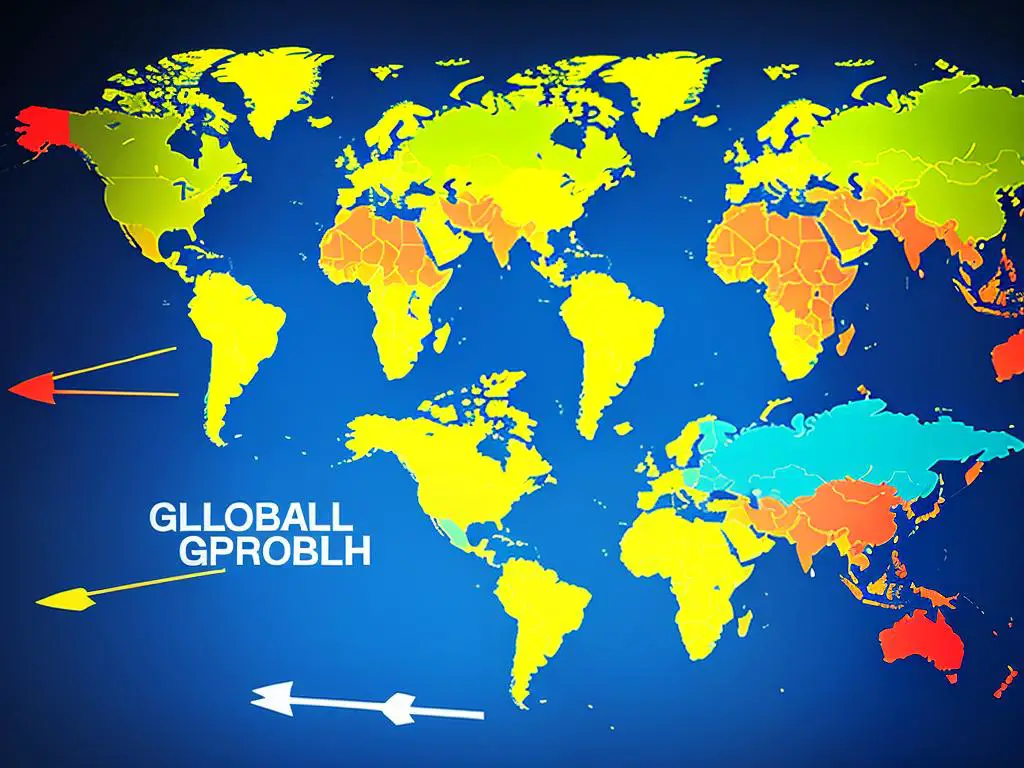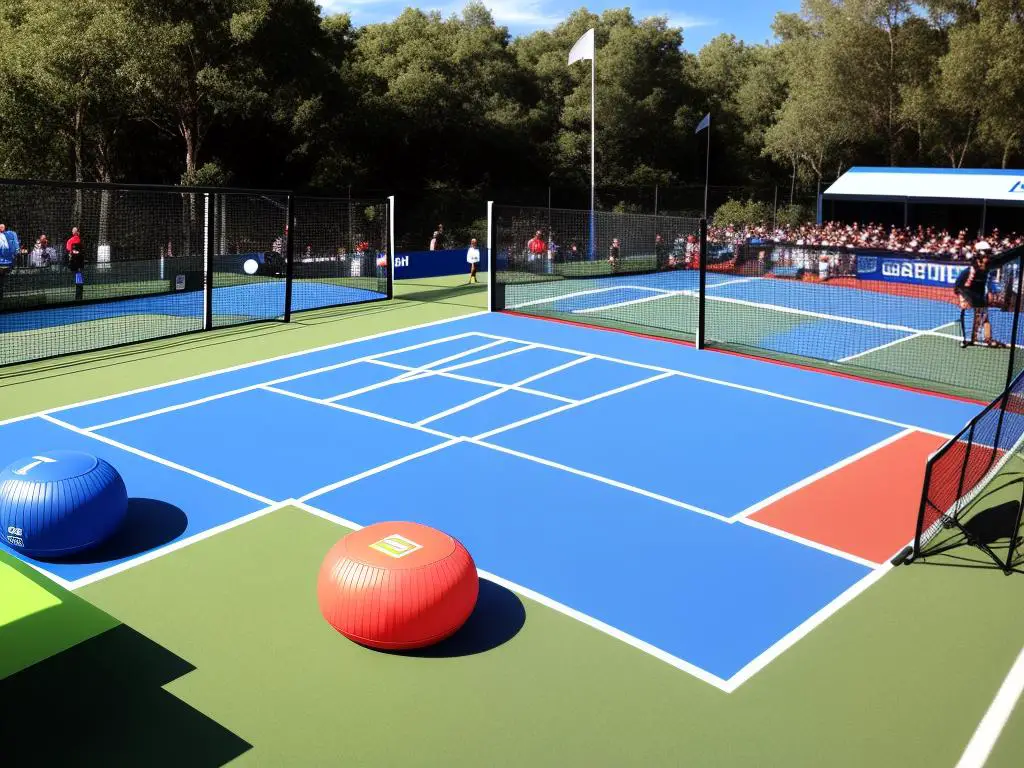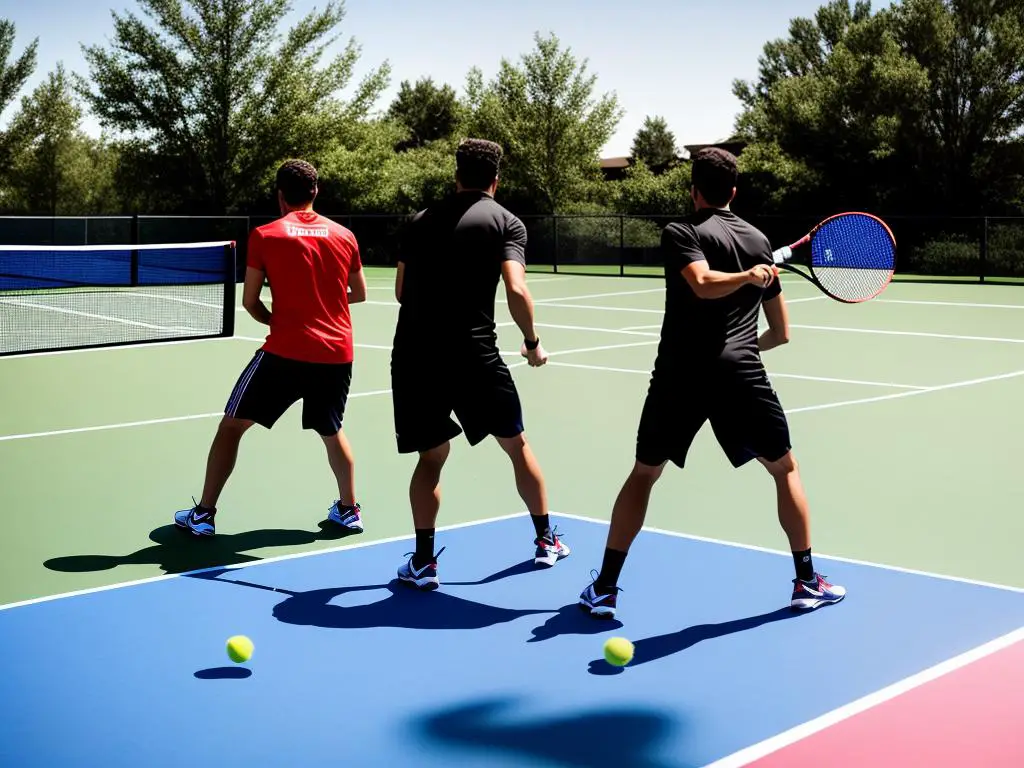In the vast world of sports, padel stands out as a rapidly growing phenomenon that is captivating audiences and athletes globally. Despite its relatively recent introduction in the 1960s, padel has surged in popularity, transcending its Spanish origin and permeating various corners of the globe in a strikingly short span. Its unique blend of simplicity and strategic complexity, along with its compact, spectator-friendly nature, has garnered it a distinct standing among both recreational and professional sports circles. This is a fascinating exploration of padel’s exceptional trajectory, from its humble beginnings to its current worldwide resonance and influence on the global sports industry.
Understanding Padel: An Overview
Understanding Padel: A Brief History
Padel is a racquet sport that is often described as a combination of tennis and squash. It originated from Mexico in 1969 where it was played by the elite. Its popularity soon reached Spain where it was played along the coastal areas during summer vacations. Due to its easy to learn nature and sociability aspects, padel quickly spread in Spain and became one of the most popular sports.
Rules and Characteristics of Padel
The game is typically played in doubles on an enclosed court, which is roughly one-third the size of a tennis court. The scoring system is identical to that of tennis and the balls used are slightly less pressurised. Perhaps the most distinctive feature of padel is that the walls are used as part of the game, which is reminiscent of squash. The paddle used in the game is solid with no strings, making it different from other racquet sports.
Padel vs Other Racquet Games
One of the main features that makes padel different from tennis and squash is the use of walls, which instead of being out-of-bounds, are used as part of the game. Furthermore, padel is played as doubles exclusively, which increases the social aspect of the game. Also, the net in padel is lower than in tennis, and the court is smaller. Padel rallies tend to be longer, requiring different strategies and techniques as compared to other racquet games.
Padel’s Rising Popularity Around the World
Thanks to its easy-to-learn mechanics, remarkable sociability, and inclusive gameplay for both genders, padel is quickly becoming a global sensation. From its humble beginnings in Mexico, the sport has significantly penetrated Spain and spread to over 90 countries worldwide.
In Europe, the game continues to flourish with approximately 12,000 courts. Spain, with its six million strong padel-loving populace, tops the list, exceeding its number of tennis players by two million. Countries like the United Kingdom, Italy, Sweden, and Portugal, traditionally known for their affinity for tennis, are experiencing a similar surge in padel’s popularity.
Over in Latin America, Argentina stands out with its fervent passion for padel. Often compared to football in terms of popularity, the sport boasts around 6.5 million Argentine players.
While the United States and Asia are catching on slower to the padel wave, the United States Professional Padel Association (USPPA) and the Asian Padel Federation are putting great effort into promoting the sport within these regions.
On the professional front, the World Padel Tour has successfully raised the game to new heights. Originating in Spain, the tour now features tournaments in diverse locations like Dubai, Argentina, and Sweden.
The International Padel Federation is advocating for the inclusion of padel in the 2028 LA Olympics, which would significantly elevate the sport’s global recognition.
In summary, the last decade has witnessed an extraordinary surge in padel’s worldwide growth. Its expanding audience, combined with active promotion by various associations, provides a positive outlook for the game’s enduring global progression in the foreseeable future.

The Padel Boom: Europe and Beyond
A Deeper Look into Padel’s Soaring Popularity in Europe
In the recent decade, padel, a blend of tennis, squash, and badminton wrapped into a single racquet sport, has seen an explosive growth in Europe. Born in Mexico during the 1960s, the sport took Spain by storm before rapidly permeating other European nations.
Spain leads the European pack, brimming with fans of the sport. As per reports from the Spanish Padel Federation, the country hosts over 11,000 padel courts serving its four million players, meaning about 10% of Spanish inhabitants participate in the sport. With these numbers on a steady incline, Spain comfortably secures its position as the world’s largest padel market.
Behind The Popularity: The Allure of Padel
Several factors contribute to padel’s European acclaim, including its easy-to-learn nature and enjoyable social aspect. Additionally, compared with tennis, padel does not require as many physical demands or technical skills, making it accessible for people of all ages and fitness levels.
Moreover, the sport’s social element appeals to large groups, driving its popularity among families and friends. Unlike many other racquet sports, padel is generally played in doubles, fostering a collaborative spirit that expands to broader social networks and local communities.
International Expansion: Padel Beyond Europe
The contagion of padel fever has extended beyond the borders of Europe. In late 2018, Sweden opened its 100th club dedicated to padel, aligning with the Swedish Padel Federation’s declaration that this sport was the country’s fastest-growing. Moreover, Belgium and the Netherlands each inaugurated their first professional padel tours in 2019 and 2020, respectively.
The sport’s growth has also crossed oceans, with Argentina boasting the second-highest number of players worldwide, and a burgeoning interest evident in the United States, where the sport is still relatively new but gaining traction.
Future Prospects: An Uptrend with Momentum
Such is the intensity of the global padel wave that the International Olympic Committee formally recognized the International Padel Federation in 2018 as an official equipment sport. This acknowledgment has since opened doors for padel’s possible inclusion in future Olympic Games, fostering a new level of legitimacy and spurring its intrinsic worldwide growth.
In Summary: The Padel Phenomenon
Though primarily stirred by Europe’s passion – most notably in Spain, the acceptance and uptake of padel are considerably surging on a global scale. Factors like its broad appeal to different ages, skills, and its community-centric nature position it as a burgeoning cultural trend with lasting appeal. Given these elements, it’s evident that the worldwide surge in padel is already in full swing.

Growing Padel Culture in the US
A Closer Look: The Emergence of Padel in the United States
Padel, a racket sport that skillfully blends elements of tennis and squash, has experienced a recent increase in popularity within the United States. First introduced in Mexico in 1969, it steadily became a key fixture in Spanish-speaking countries and has started to cause a stir across Europe. Yet, it’s only in recent years that the sport has begun to make a significant impact in the U.S.
Growth Factors: Promotion and Adoption
Several factors have contributed to the growth of padel in the U.S. Among these is the influence of local sports clubs and schools that have incorporated padel into their activities. Recognizing the sport’s potential for fostering teamwork and improving physical fitness, these organizations are increasingly investing in padel court construction and organizing tournaments.Moreover, athletes and fitness enthusiasts have been instrumental in promoting padel. Many enjoy the sport’s fast-paced nature and the strategic gameplay it requires. Social media influencers with a focus on fitness and lifestyle have also played a part in the sport’s rising fame, featuring padel in their posts and videos.
National Sports Organizations and Padel
National sports organizations are also playing a significant role in promoting padel in the U.S. The United States Padel Association (USPA), for one, has been tirelessly advocating for the sport’s popularity. Their initiatives include certifying teaching professionals, sanctioning tournaments, and collaborating with international padel organizations.Significant Growth Trends: Padel Courts and Clubs
One key indicator of the sport’s growth in the U.S. is the increasing number of padel courts and clubs. In Miami, commonly considered the country’s padel capital, dozens of clubs now offer padel facilities, and its popularity is rapidly expanding. In addition, several traditional tennis clubs are outfitting their facilities with padel courts to meet growing member demand.Padel Culture in the US
The growth of padel is not limited to its popularity as a sport; it also encompasses the emergence of a distinct padel culture in the United States. This culture revolves around the camaraderie and social nature of padel, as matches commonly involve four players. Post-match socializing is also a key aspect of this culture, with players often gathering for meals or drinks after a hard-fought game.Leveraging Growth: Future Projections
Padel, a sport gaining traction for its fast-paced, enjoyable, and social characteristics, is expanding rapidly in the United States. Its strong development worldwide signals that this trend is just making its presence known stateside. As padel’s popularity continues to gain momentum, particularly with younger demographics, and garners more backing from sports organizations and enthusiastic players, there’s plenty of room for optimism about this sport’s future.
Padel’s Impact on Global Sports Industry
Padel’s Financial Impact on the Global Sports Industry
Padel, blending elements from tennis, squash, and badminton, has moved from relative obscurity to become a significant influence on the global sports scene. Across continents, from European countries like Spain and Sweden to North African regions like Morocco and across the Atlantic to Mexico, the appeal of this racquet sport is palpable. The trend is evident in the remarkable 50% increase in the number of padel courts outside Spain over the past three years, up to 2021.
This growing interest is stirring a financial windfall within the sports industry. Sweden markedly displays this trend, with the number of padel facilities increasing exponentially from a modest 50 in 2015 to over 700 by 2020. Alongside the surge in infrastructural development, investments are also being poured into facility development. An eminent Swedish company, Padel Zenter, for instance, managed to secure 80 million SEK (approximately 9.7 million USD) in 2018 to fuel its expansion.
In the Middle East, countries like the United Arab Emirates and Qatar view padel investments as a unique avenue to shape and glow their diverse sports economic landscape. The investments are not only for building world-class facilities but also for hosting high-profile tournaments that magnetize global attention.
Future Growth Prospects for Padel
Given the sport’s soaring popularity, future growth prospects for padel are robust. According to a report by the International Padel Federation (FIP), padel is currently practiced in more than 90 countries. The FIP also estimates that there are around 20 million padel players globally—a figure that’s predicted to double by 2030.
One key factor driving this growth is the inclusion of padel in multi-sport events like the Pan American Games and the Mediterranean Games. There is also ongoing lobbying for the inclusion of padel in the Olympic Games, which if successful, could trigger unprecedented growth in the popularity and financial standing of the sport.
Padel Redefining the Sporting Goods Market
The global boom in padel isn’t just leaving its mark on the sports economy and investment landscape; it’s reshaping the sporting goods market as well. Established sports brands are adapting to this shift, developing and marketing padel-centered products to keep up with the demand.
Notably, major brands like Adidas, Bullpadel, and Babolat launched lines dedicated to Padel equipment, resulting in increased sales revenues. The growth of padel is encouraging new players to enter the sporting goods market as well, leading to a rise in competition among manufacturers and a wider variety of products for consumers.
Moreover, commerce related to Padel isn’t just confined to sporting goods. The surging popularity of the sport has led to investment in padel-focused smartphone apps, online training platforms, and digital communities, further fueling its global commercial presence.
Final Thoughts
Padel is blossoming across the globe, ensuring not only the diversification of the global sports economy but also spearheading creative investment and advertising campaigns within the sports goods market. Looking at the current pace of growth, it seems that padel’s positive impact on the global sports industry is unlikely to slow down anytime soon.

Challenges and Future Prospects of Padel Growth
Unveiling Padel: A Rising Global Sport
Padel, a racket sport gaining considerable traction chiefly in regions like Latin America and Europe, presents an interesting concoction of tennis and squash. It’s typically played as a double game in a compact, enclosed court which is approximately a third of a standard tennis court size, with the walls being a vital part of the gameplay. One of the attributes that makes Padel standout is its universally appealing accessibility, eschewing the need for immense physical strength akin to tennis, thereby rendering it an appropriate sport for individuals across all ages and different strata of physical prowess.
Challenges for Padel
Despite its growing popularity, the padel industry faces several challenges that could limit its growth. The lack of awareness and understanding of the sport outside of Latin America and Europe is the primary challenge. Many people outside these regions do not know what padel is, limiting the possible participant pool.
Moreover, there’s a lack of global standardization and regulation for the sport. Different regions may have diverse rules and norms, and without a typical governing body that sets a global standard, this could confuse new players and discourage them from partaking.
The padel equipment’s specialized nature may also pose a challenge. Unlike tennis or squash, which can be played with commonly available sports gear, padel needs custom-made rackets and balls. The courts are also specialized and more expensive to build than conventional squash or tennis courts.
Infrastructure is another significant challenge that Padel faces. It requires the establishment of unique outdoor and indoor courts, which could present a stumbling block in areas without existing Padel infrastructure or places where land is expensive.
Future Prospects of Padel Growth
Despite these obstacles, padel’s growth prospects remain promising. Foremost amongst these are its low entry barriers from a physical standpoint. Due to its less taxing nature, people of all age groups can pick up and play. As such, it enjoys a broad appeal, a factor responsible for the sport’s rapid rise in places like Spain.
Moreover, the sport already has a noticeable presence in the celebrity world, with figures like football stars Lionel Messi and Cristiano Ronaldo among its enthusiasts. This high-profile endorsement can serve as a significant driving factor for the sport.
In countries like Sweden, where the sport is gaining traction, investors have shown interest in building padel facilities. Therefore, increasing awareness coupled with private investment could fuel the growth of the sport.
Moreover, the sport’s regulatory body, The International Padel Federation, is pushing for the sport to be included in the Olympic Games. If successful, this could be a major catalyst for the sport’s growth, offering it a global platform and increased visibility.
Additionally, sport manufacturers seem to be showing a rising interest in Padel. Recently, Adidas launched its Padel rackets, suggesting that well-known sports brands might start investing in the sport, further promoting its popularity.
While significant challenges exist for Padel, its future growth seems full of potential if the sport can successfully navigate through these obstacles and continue to capitalize on the exciting opportunities that lie ahead.

Padel’s inspiring growth journey unveils a myriad of prospects for the sport’s future, alongside some formidable challenges. Amidst increasing global recognition and a thriving culture in Europe and the United States, its impact on the sports industry has been undeniably profound. Nevertheless, its success trajectory is not without obstacles. In the fostering of a sustainable, resilient padel culture lies the vital task of overcoming these challenges effectively. From refining promotional strategies, consolidating investments, to broadening its appeal even further, padel holds a promising future capable of reshaping global sports dynamics.